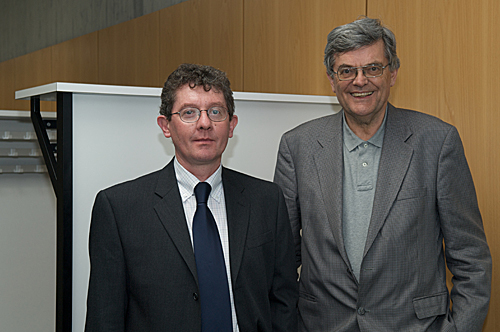J.C. Séamus Davis
Laboratory of Atomic and Solid State Physics, Cornell University, Ithaca, USA

Date
21 May 2008
Title
Quasiparticle Extinction due to approaching Mottness – the Achilles' Heel of High-TcSuperconductivity?
Abstract
Our best hopes for achieving room-temperature superconductivity have been the hole-doped copper-oxide Mott insulators (MI). They exhibit the highest critical temperature Tc of any known material (165K). But the Tcof copper-oxides falls to zero with decreasing hole-density ρas the observed energy gap Δ increases to exceed 100 meV, a value for which Tc would exceed room temperature in BCS systems. During 2007 we have made several advances towards understanding this situation. The key point is that when a copper-oxide MI is converted into a high temperature superconductor, the MI states localized in real-space must evolve into momentum-space eigenstates. Because of its unique capability to determine electronic structure simultaneously in real-space and momentum-space, quasiparticle interference (QPI) imaging using STM is ideal for studying such effects. We used superconductingQP techniques to study the canonical high-Tcsuperconductor Bi2Sr2CaCu2O8+ δ as ρ is reduced towards zero. We discovered a progressive transformation of momentum-space states into real-space states as the MI is approached3. It appears that the same ‘Mottness’ with yields high energy electron pairing, extinguishes the momentum-space quasiparticles which are necessary for the superconductivity. We also demonstrate that the characteristic real-space electronic structure remaining after the quasiparticle extinctionis, in fact, that of the famous ‘pseudogap’ excitations.
